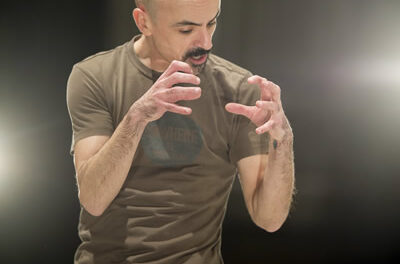The period between the end of most summer music festivals and the post Labor Day startup of the fall season is probably the driest for any musical performances. So, the few that do take place should be savored, especially when it is a rather unique ensemble and program. Durham’s St. Stephen’s Episcopal Church hosted a lovely afternoon concert by the North Carolina Baroque Orchestra, in celebration of their fifth anniversary. Based in Davidson, NC and founded in 2011 by sisters Frances Blaker (conductor and artistic director) and Barbara Blaker Krumdieck (cello), this ensemble has quickly risen to become a highly respected addition to these specialized orchestras with performances throughout the southeast and further.
So, just what is a Baroque orchestra and how does it differ from a “regular” modern orchestra? The answer(s) lie on a spectrum from short, basic info to detailed, esoteric discussions that have taken up voluminous writings. It is no one thing and even the size ranges from as little as a dozen musicians to numbers equivalent to a standard modern orchestra. Although there is no “rule” against it, as in the performance today, the works played are generally from the Baroque era. Instruments used are authentic Baroque ones, or most likely replicas of those that would have been played back then. Different strings, mainly gut rather than metal core are used, and playing techniques are also a bit different from today. The kind of tuning is also quite altered, although this is a complicated topic that will just need to end right here! Most of all, the appreciation of these differences is in the ear of the beholder, and you can find debates on the resulting sound that can get as heated as any political discussion!
The program began with the most well-known work and composer: Ouverture from Suite No. 1 in C by J.S. Bach. As mentioned above, ears needed to be somewhat recalibrated to the sound – you knew something was different, but you couldn’t quite articulate what that was. Strings were a bit softer and didn’t have quite the edge of a modern orchestra. Flutes (Barbara Norton and Kelly Roudabush) here are wooden with a similar result as the strings. The bassoon (Jessica Kunttu) is slightly smaller than the modern one and played while standing. To use a modern expression, generally the total effect is less “in your face” and more nuanced, almost muted. It has become an expectation that this type of performance practice tends to employ quite fast tempi so I was surprised that Blaker took this at a rather sluggish speed.
Next up was a fascinating performance of Franz Biber’s Pars III from Mensa Sonora (1680). Biber is know primarily as a virtuoso violinist and composer of the astoundingly creative “Mystery” or “Rosary” sonatas for violin, but this work was a stunning revelation to me. Based on typically named Baroque movements, this way-ahead-of-its-time harmonic adventure was a challenge for the orchestra for its difficult intonation, which they passed with sparkling confidence and brilliance.
Conductor Blaker was quite personable and informative between pieces, giving brief notes about aspects of the work in particular and Baroque practice in general. She explained the mass reworking of the small violin section in preparation for Vivaldi’s Violin Concerto in F. This was a way to give all players a shot at a solo, as this was an “orchestral” concerto rather than a solo one. A typical fast-slow-fast Vivaldi concerto, this may well have been what was in mind when whoever it was first said “Vivaldi wrote the same concerto 400 times.” Nonetheless, it was quite pleasant, and we got to hear nearly all the violinists take a turn showing off their exemplary skills.
This was an international affair as we went from Germany to Italy and then to France for a set of instrumental pieces taken from the operas of Jean-Philippe Rameau. After the predictable patterns of Vivaldi these works by Rameau sounded positively Romantic in comparison. We also got to see some onstage instrument re-building by horn players Christopher Caudill and Rachel Niketopoulos as their valveless horns needed to have additional tubing added and removed to accommodate key changes.
The program ended with a sampling of the enormously prolific output of Georg Philippe Telemann. As Blaker said, the surface has just been scratched in bringing all of his works to general public availability. Here we heard just the overture and fanfare from his Overture (Suite) in F. The full forces (about 22 musicians) were present for this stately work, as well as the two horn players, separating to either side of the stage to create a regal antiphonal effect. There were also some especially juicy woodwind parts well executed by previously mentioned players as well as oboist Sarah Weiner. It all ended with us wanting more with Blaker pledging to return to Durham within the year.











